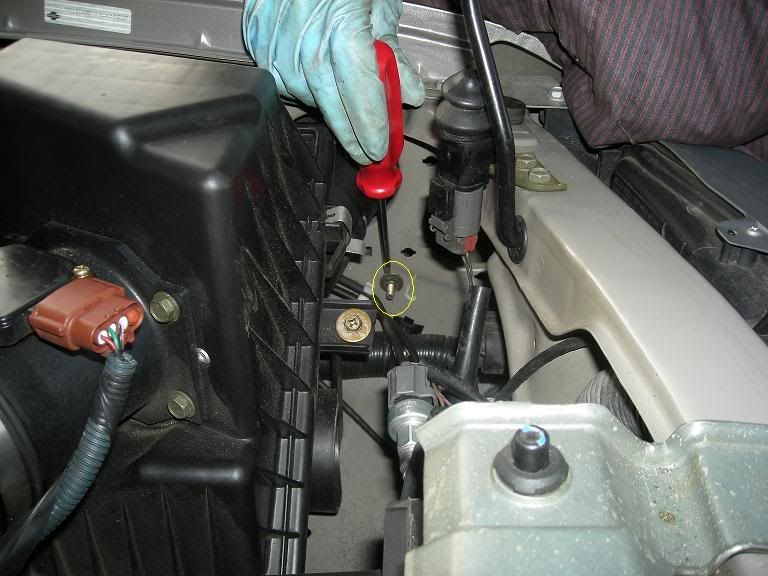First, remove the screw that fastens the resonator to the radiator:
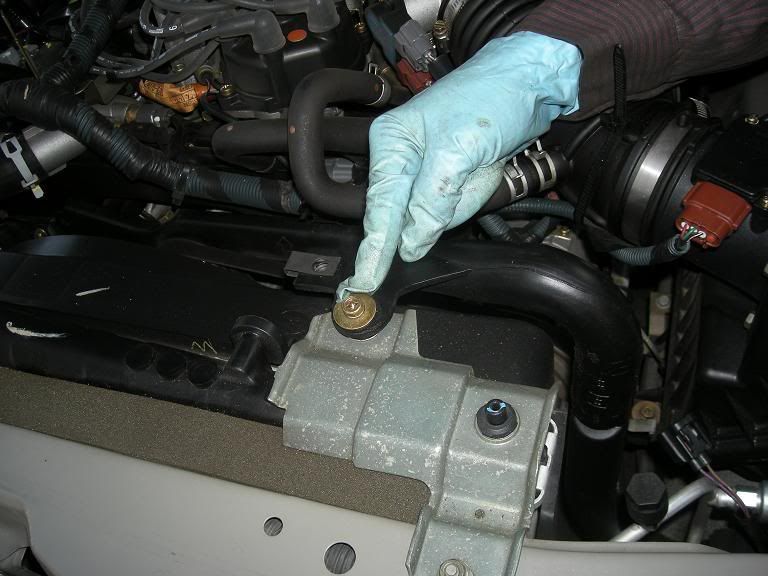
Next, simply pull the resonator (which is loosely connected to the "T-Pipe" at the other end) out of the "T-Pipe" and then out of the engine compartment.
Next, you will remove the T-Pipe. First, remove the T-Pipe from the air box as shown:
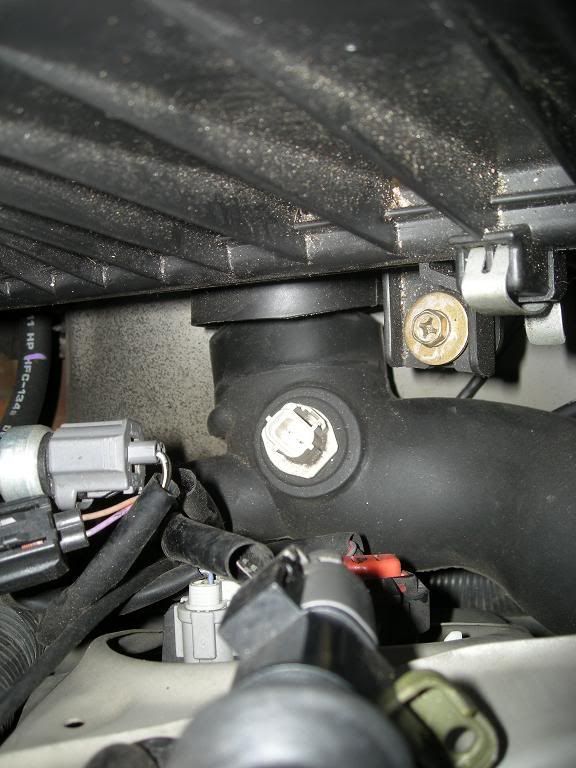
Before going any further, remove the air inlet temperature sensor plug and then remove the sensor itself from the T-Pipe. Once it is removed, you will see a blue-painted element. DO NOT TOUCH THE BLUE ELEMENT! Treat the sensor with care and lay it aside in a safe place. The sensor's location is pictured below.
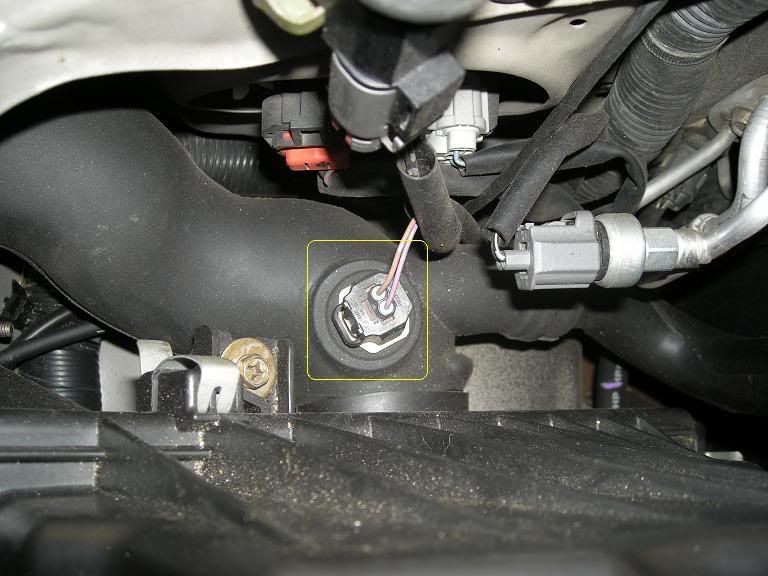
Next, twist the circled opening on the T-Pipe (that you just removed from the air box) towards the sky so that you can see directly inside the T-Pipe from a bird's point of view.
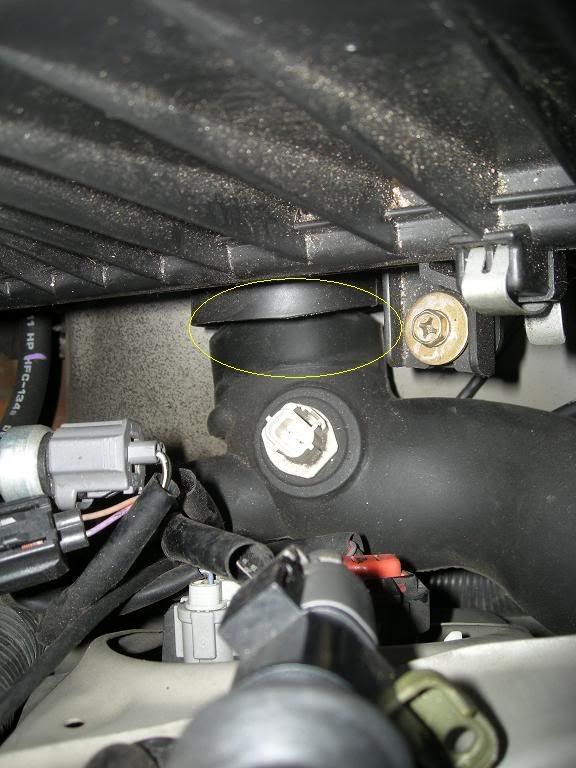
This next part is going to require a little bit of elbow grease on your part. Grasp the end of the T-Pipe farthest from the fender and pull towards the sky, then towards the fender so that you will twist the 90-degree bend in the T-pipe out of the inner fender wall as shown. The T-Pipe will not be inclined to cooperate. You're probably going to have to wrestle it out of the engine compartment.
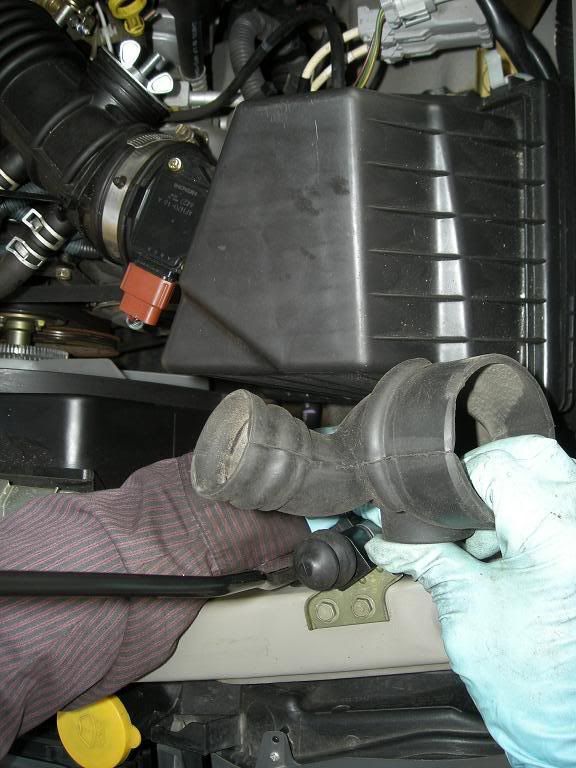
After you've pulled the T-Pipe completely out of the engine compartment as shown below, you'll need to make one small cut.
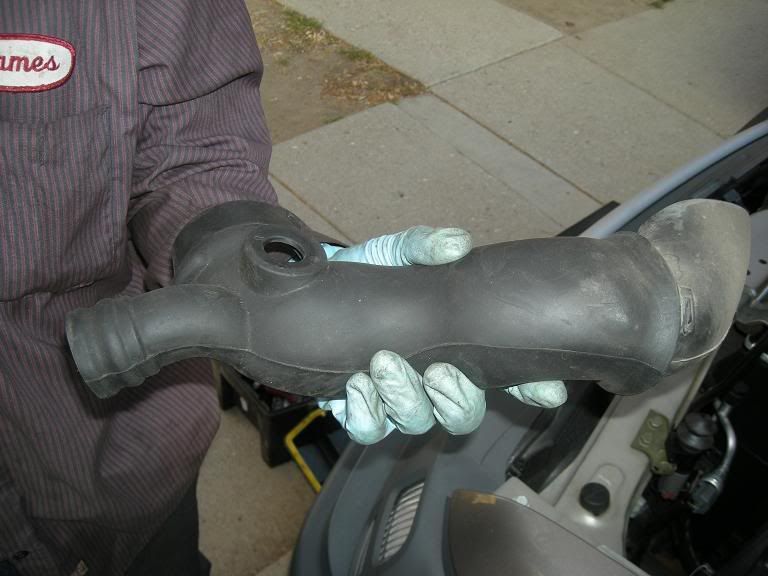
Find the smallest opening in the T-Pipe where the radiator resonator was connected. You are going to trim it at the ridge indicated in yellow in the picture below.
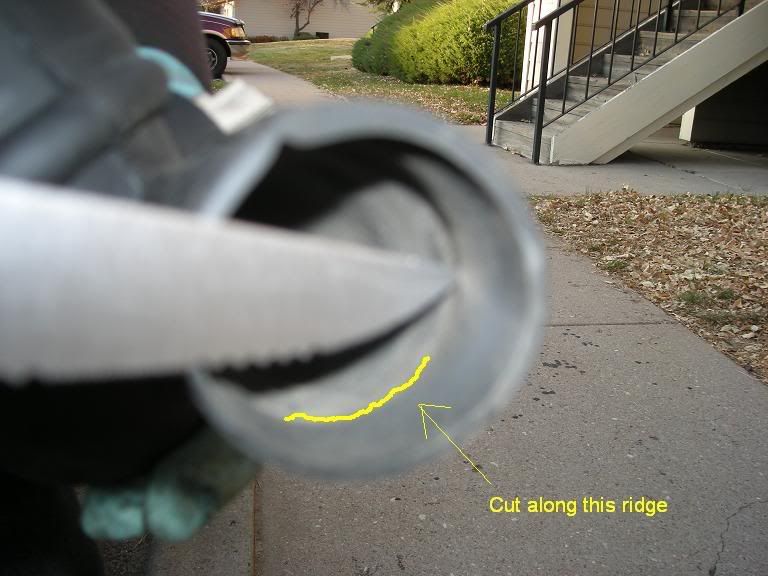
You can trim it using a common steak knife, as shown below:
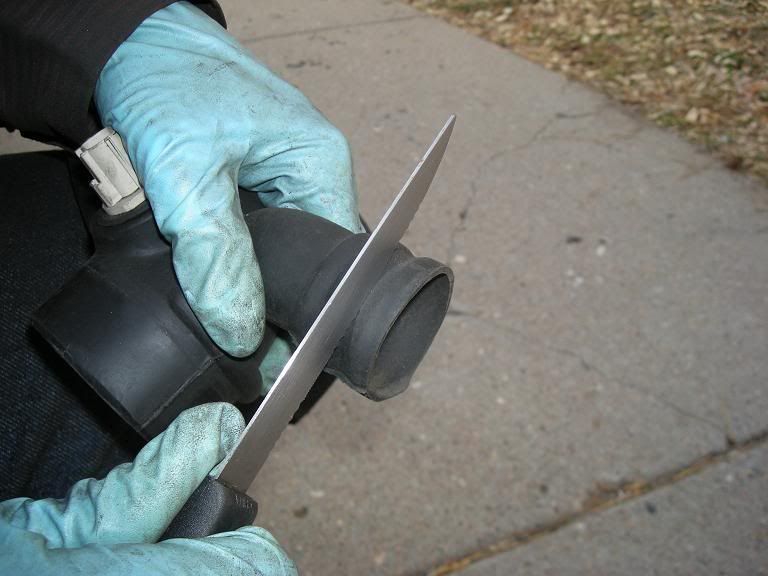
This is what the pipe should look like after the cut. You will only be cutting about 1cm off the pipe.
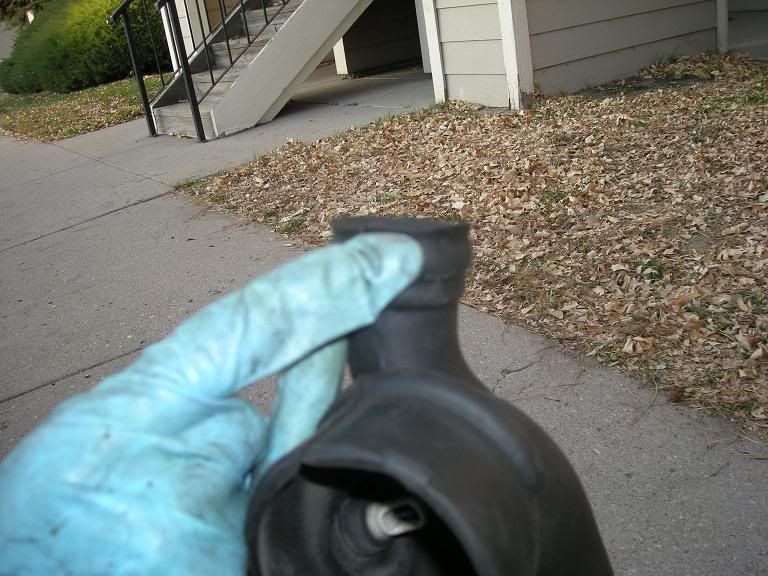
Next, you will remove the nut shown below. After it is removed, push the stud all the way through the inner fender wall so all that you see is hole. This nut attaches to the baffle that you will be removing in the next step. This is the easiest time to do this. I highly recommend a 3/8" driver with a 10mm deep socket for this task because of the limited space available to remove the nut. PUSH THIS STUD COMPLETELY THROUGH THE HOLE IN THE INNER FENDER WALL SO THAT IT FALLS INTO THE WHEEL WELL!
